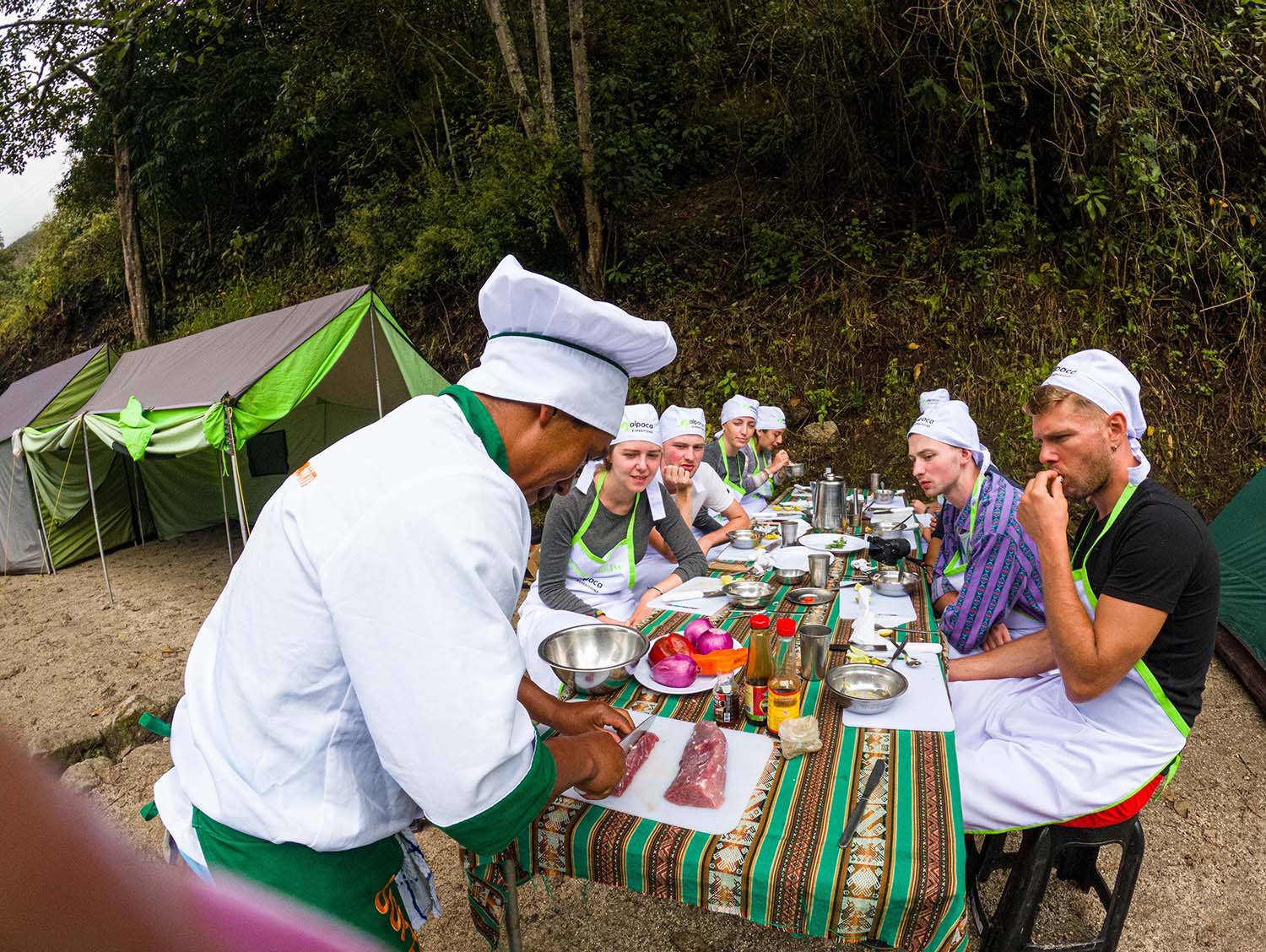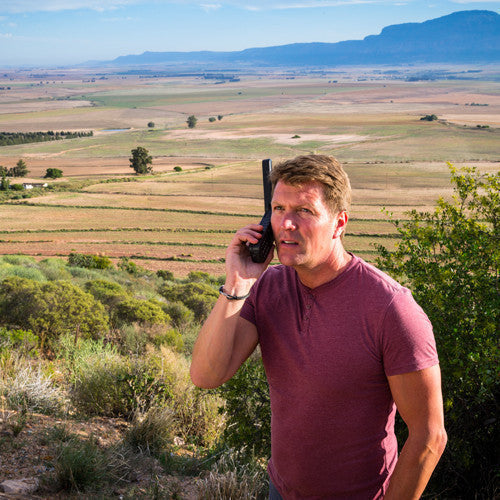Inca Trail in History: How the Ancient Road Shaped Incan Civilization
Nestled within the breathtaking landscapes of Peru, the Inca Trail stands as an ancient testament to the rich tapestry of history woven through the Andes. In this exploration of time and terrain, Alpaca Expeditions emerges as the unrivalled #1 tour operator, seamlessly blending adventure with cultural immersion.
As you embark on this narrative, envision the Inca Trail not merely as a path of stone but as a living chronicle of a civilization’s journey. Our sterling reputation serves as the key to unlocking this historical saga.
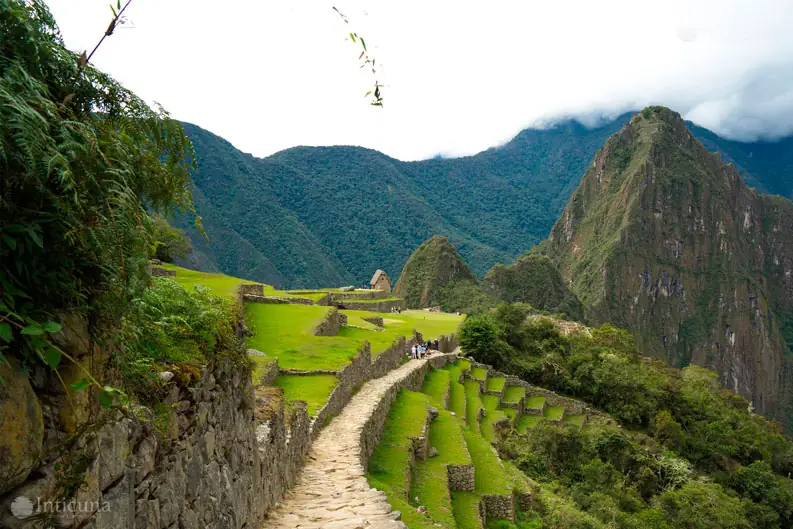
Beyond the awe-inspiring beauty, the Inca Trail holds profound historical significance. Traversing this ancient route isn’t just a trek; it’s a pilgrimage through time. Our commitment to excellence ensures that every step echoes the whispers of the past, guiding explorers through an immersive experience that transcends the ordinary.
The allure of the Inca Trail is not merely in its panoramic vistas but in its status as a living artifact, narrating tales of trade, religious fervor, and architectural marvels. As your trusted companion, invite you to delve into this historical tapestry, where every footfall is a connection to the heartbeat of the Incan civilization. Your adventure awaits, intertwined with the footsteps of history, courtesy of us – where our home is your next adventure.
The Origins of the Inca Trail
In the annals of history, the rise of the Inca civilization stands as a testament to human ingenuity and resilience. Flourishing in the mountainous terrain of the Andes, the Incas carved out a civilization that rivaled any of its contemporaries. Emerging in the 13th century, the Inca Empire rapidly expanded, ultimately becoming the largest empire in pre-Columbian America.
As this mighty empire expanded its reach, the Inca Trail emerged as a vital artery, intricately woven into the fabric of the Andean landscape. The purpose of constructing this remarkable trail went beyond mere connectivity; it was a strategic masterpiece. The Incas, with their sophisticated understanding of geography, utilized the trail for both practical and symbolic purposes.
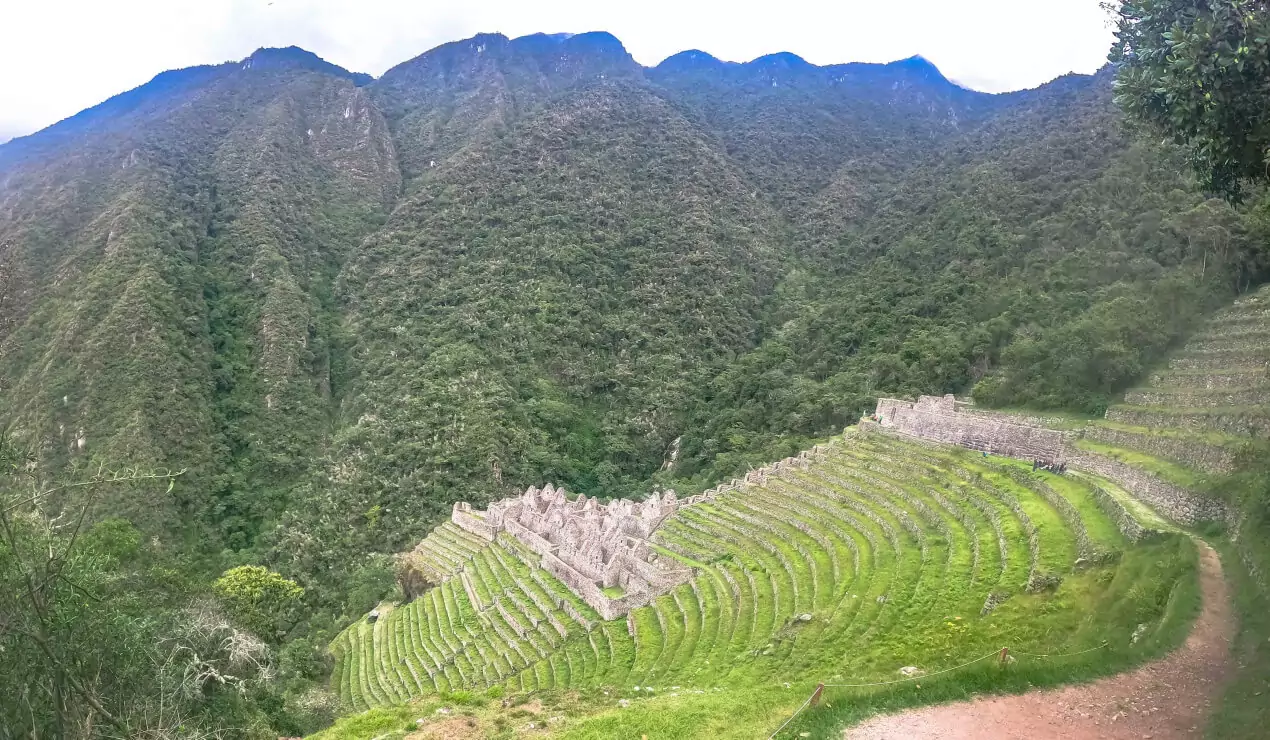
Functionally, the Inca Trail served as a network linking the diverse regions of the empire. It facilitated efficient trade, enabling the exchange of goods and cultural influences across vast distances. More than a mere path, it was a lifeline connecting the heart of the empire with its farthest reaches.
Yet, the Inca Trail was more than a logistical marvel; it bore profound symbolic significance. Winding through sacred landscapes, it echoed the spiritual beliefs of the Incas. Every stone laid was a tribute to their reverence for nature and their connection to the divine.
Importance of the Inca Trail in Incan Civilization
Trade and Communication
The Inca Trail, a sinuous pathway etched into the Andean landscape, played a pivotal role in fostering connectivity among the diverse regions of the Inca Empire.
As a vital trade route, it functioned as the lifeline of commerce, facilitating the exchange of goods that ranged from the mundane to the extraordinary. This intricate network of trails enabled a seamless flow of resources, connecting bustling urban centers with remote agricultural communities.
The exchange of goods was not merely economic; it was a conduit for cultural interchange. Along the Inca Trail, diverse communities engaged in a dynamic dialogue of ideas, beliefs, and practices.
The rhythm of footsteps along the trail echoed the pulse of a civilization where trade wasn’t just about transactions but a celebration of shared experiences and mutual enrichment.
Religious Significance
Beyond its practical implications, the Inca Trail was a sacred journey, intricately woven into the spiritual fabric of Incan religious practices. The trail itself was a pilgrimage, guiding devotees through a tapestry of natural wonders that were considered divine. Every step was a communion with the sacred, as the trail led pilgrims to awe-inspiring sites that embodied the Incas’ reverence for the natural world.
Sacred sites along the Inca Trail, strategically placed to align with celestial events, became places of worship and reflection. Each stone, each turn, held a spiritual significance, resonating with the energy of centuries of devotion.

The Inca Trail, therefore, served not only as a conduit for physical travel but as a metaphysical journey, connecting the earthly with the divine in a harmonious dance that defined the very essence of Incan civilization.
In this way, the Inca Trail didn’t merely connect physical destinations; it was the sinew that bound together the expansive body of the Inca Empire, embodying the spirit of a civilization that thrived against the backdrop of the Andean peaks.
Construction and Engineering Marvels
Inca Architectural Techniques
The Inca Trail is a testament to the awe-inspiring ingenuity of Inca architectural prowess, a symphony of stone meticulously crafted into a masterpiece that seamlessly blends with the natural contours of the Andean landscape.
-
Overview of Impressive Construction
The construction along the Inca Trail is a feat of precision and engineering acumen. Stone-paved pathways wind their way through rugged terrains, showcasing the Incas’ ability to harmonize their structures with the environment. The trail is a living museum of ancient engineering, a deliberate choice to use the natural topography as both a canvas and a foundation.
-
Examples of Notable Architectural Features
Notable architectural features along the Inca Trail captivate the imagination. Inti Punku, the Sun Gate, stands as a prime example. Positioned to align with the sunrise during the winter solstice, it marks the ceremonial entrance to Machu Picchu.
The craftsmanship of retaining walls, fashioned without mortar, and the precision of agricultural terraces demonstrate the Inca’s profound understanding of landscape engineering.
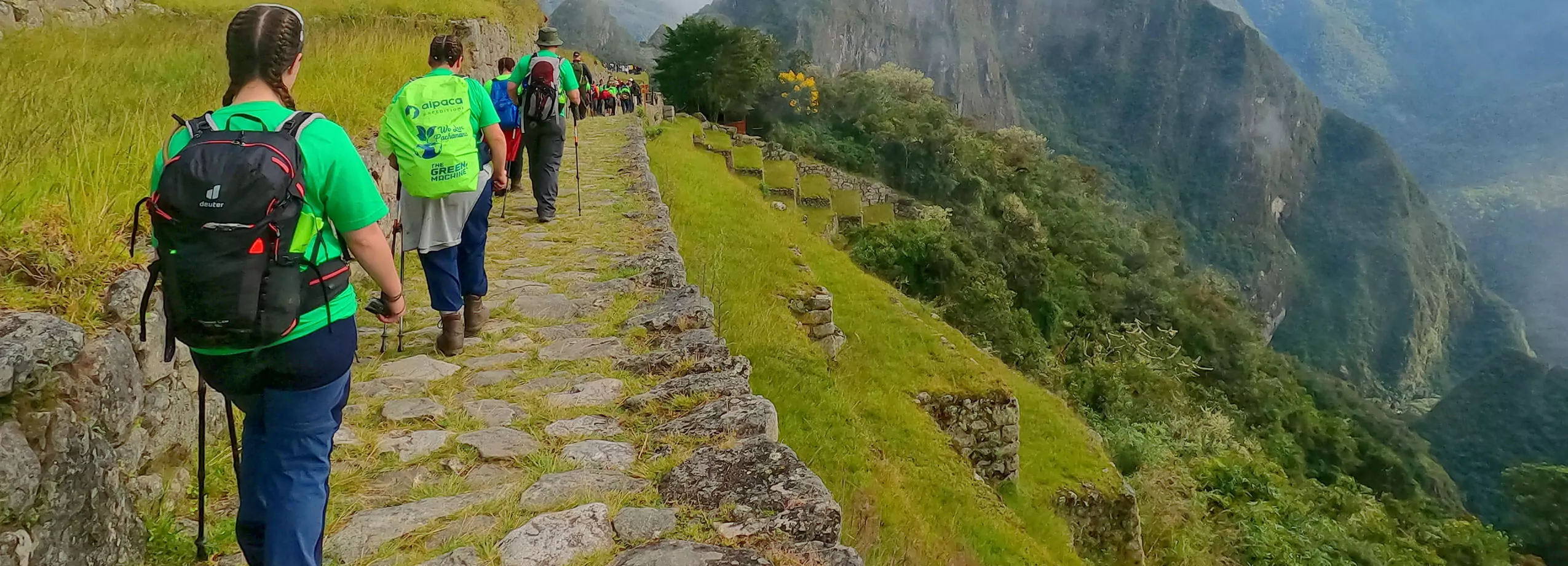
Additionally, the intricacies of Wayllabamba’s agricultural laboratory and the mystical Wiñay Wayna, a complex of agricultural terraces and ritualistic fountains, further showcase the mastery of the Inca architects.
Each stone, each structure, narrates a story of a civilization that harnessed nature’s elements to create not just a trail but a living testament to the boundless capabilities of Inca ingenuity.
The Decline of the Inca Empire and the Inca Trail
Spanish Conquest
The Spanish conquest marked a seismic shift in the fate of the Inca Empire and, consequently, the Inca Trail. With arrival of Spanish conquistadors, led by Francisco Pizarro, early 16th century, the once-mighty Inca civilization faced unprecedented threat.
-
Impact of Spanish Arrival on the Inca Civilization
The Spanish arrival brought about a cataclysmic clash of cultures. The Incas, with their advanced agricultural practices and intricate societal structures, were confronted by the military might and foreign diseases of the Spanish. Smallpox decimated the native population, leading to social upheaval and a rapid decline in the empire’s strength.
The strategic intelligence and organization that once characterized the Inca civilization were no match for the devastating forces of the Spanish conquest. The fall of the Inca ruler Atahualpa in 1533 marked a turning point, leaving the empire fractured and vulnerable to further exploitation.
-
Disuse and Abandonment of the Inca Trail
In the aftermath of the conquest, the Inca Trail, once a vibrant artery pulsating with life, fell into disuse and abandonment. The decline of the empire meant that the intricate network of trails that connected its diverse regions lost its practical significance. The Spanish, focused on exploiting the region’s resources, had little use for the carefully crafted paths that once symbolized the unity of the Inca civilization.
The Inca Trail, once trodden by traders, priests, and pilgrims, became a relic of a bygone era, hidden beneath the encroaching vegetation of the Andean mountains. It would take centuries before the footsteps of explorers and archaeologists, including Hiram Bingham, would rediscover and reveal the historical significance of this ancient route. The decline of the Inca Empire and the subsequent abandonment of the Inca Trail represent a poignant chapter in the complex narrative of Peruvian history.
Interesting Facts about the Inca Trail and Its Historical Significance
- Flourishing Civilization:
The Inca Empire, emerging in the 13th century, rapidly expanded to become the largest pre-Columbian empire in America. It thrived in the challenging terrain of the Andes
- Strategic Masterpiece:
The Inca Trail wasn’t just a path; it was a strategic masterpiece. The Incas, with advanced geography knowledge, utilized the trail for efficient trade and as a symbol of their spiritual beliefs
- Living Artifact:
Beyond its breathtaking beauty, the Inca Trail is a living artifact narrating tales of trade, religious fervor, and architectural marvels. Every stone and structure echoes the whispers of the past
- Sacred Journey:
The trail served a dual purpose, functioning as a vital trade route while also being a sacred journey. Pilgrims traversed through divine landscapes, connecting with the spiritual essence of the Incan civilization
- Ingenious Architecture:
Inca architectural techniques showcased unparalleled ingenuity. Stone-paved pathways harmonized with the natural contours of the Andean landscape. Featuring impressive structures like Inti Punku and Wayllabamba’s agricultural laboratory
-
Spanish Conquest Impact:
The Spanish conquest in the 16th century brought about a cataclysmic clash. It lead to the fall of the Inca Empire and the subsequent disuse and abandonment of the Inca Trail
- Rediscovery by Hiram Bingham:
In 1911, Hiram Bingham’s exploration unearthed Machu Picchu and the Inca Trail. Marking a pivotal moment in global awareness and historical rediscovery
- Modern Conservation Efforts:
Alpaca Expeditions, as the #1 tour operator, plays a crucial role in preserving the Inca Trail through sustainable tourism practices. It ensures its ecological and cultural integrity
- Educational Experience Today:
We transform the Inca Trail into a classroom without walls. Offering trekkers a nuanced understanding of Incan civilization through expert guides and interactive experiences
- Breathtaking Highlights:
The journey culminates at the Sun Gate, revealing Machu Picchu’s splendor. Trekkers traverse diverse landscapes, from lush green cloud forests to Andean mountain passes, becoming part of a living canvas
Embark on adventure intertwined with history, where every step is a connection to the ancient heartbeat of the Incan civilization.
Hiram Bingham’s Discovery
-
Historical Context of Hiram Bingham‘s Exploration
In 1911, amidst the thick vegetation of the Andes, Hiram Bingham, an American historian and explorer, stumbled upon the hidden jewel of Machu Picchu and the Inca Trail. At the time, the site was largely unknown to the Western world, and Bingham’s expedition marked a pivotal moment in the historical rediscovery of the Inca civilization.
Motivated by a thirst for knowledge and adventure, Bingham’s expedition was initially focused on finding the lost Inca capital, Vilcabamba. However, fate led him to the astonishing ruins of Machu Picchu, unveiling archaeological treasure trove that would rewrite history books.
-
Initial Impact on Global Awareness
Bingham’s discovery had a profound impact on global awareness. The unveiling of Machu Picchu captured the imagination of the world, shedding light on the sophistication of Inca architecture and the cultural richness of a civilization previously shrouded in mystery.
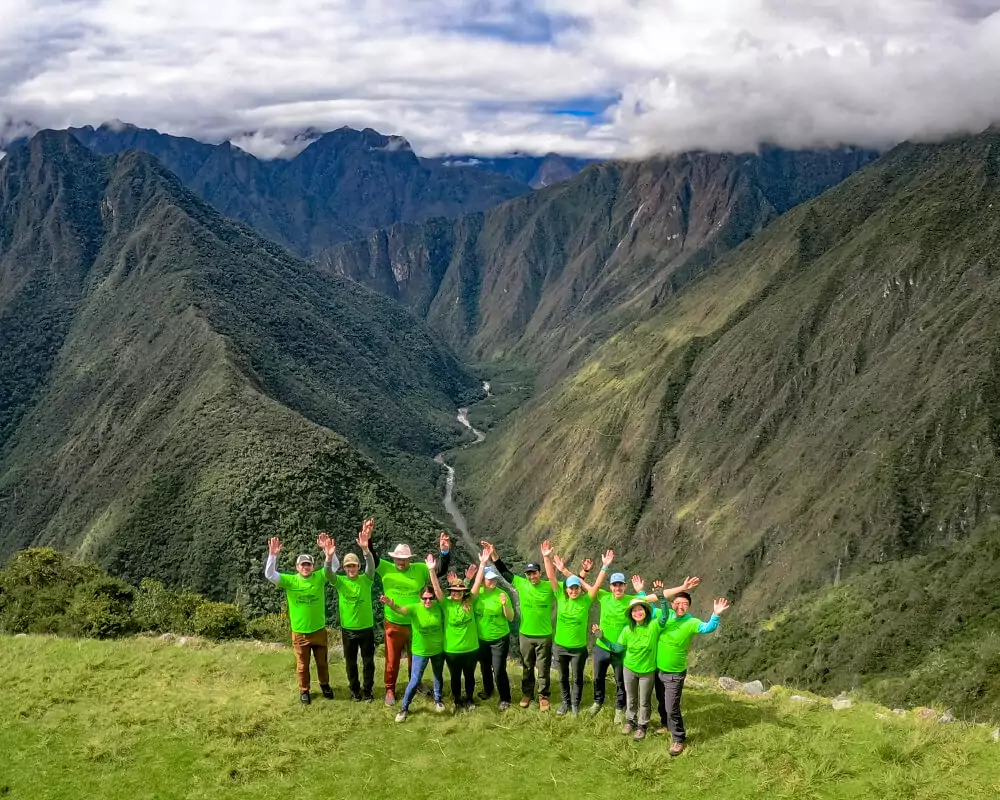
The allure of the Inca Trail, leading to this magnificent city, drew attention to the historical significance of the pathways that once echoed with the footsteps of the Incas.
Modern Conservation Efforts
-
The Role of Alpaca Expeditions in Preserving the Inca Trail
In the wake of this rediscovery, the responsibility to preserve the Inca Trail fell into the hands of conscientious custodians like us. As the #1 tour operator in Peru, we play a pivotal role in ensuring the sustainable preservation of this ancient route.
With a commitment to responsible tourism, we strive to minimize the environmental impact of the trail. While maximizing its positive contributions to local communities.
-
Sustainable Tourism Practices
We implement sustainable tourism practices that prioritize the preservation of the Inca Trail’s ecological and cultural integrity. This includes eco-friendly camping practices, waste reduction initiatives, and community engagement programs.
By incorporating sustainable tourism, we not only offer an immersive and educational experience for travelers but also act as a guardian of the Inca Trail, ensuring its legacy for future generations.
Through these efforts, the Inca Trail becomes not only a historical relic but a living, protected testament to the marvels of ancient engineering and the beauty of responsible travel.
Experiencing the Inca Trail Today
Alpaca Expeditions’ Approach
-
Our Commitment to Preservation
As the premier tour operator in Peru, approaches the Inca Trail with a profound commitment to preservation. Recognizing the delicate balance between sharing this historical treasure and conserving its integrity, we prioritize sustainable practices.
From meticulously planned itineraries to eco-friendly camping methods, every aspect of the journey is designed with a deep respect for the Inca Trail’s natural and cultural heritage. The company’s dedication to responsible tourism ensures that each trek contributes positively to the preservation of this ancient wonder.
-
How the Tour Provides an Educational Experience
Beyond being a conduit for adventure, we transform the Inca Trail into a classroom without walls. Expert guides, well-versed in Inca history and culture, accompany trekkers, sharing insights and stories that breathe life into the ancient stones. The journey becomes an educational odyssey, offering a nuanced understanding of the Incan civilization.
Through engaging narratives and interactive experiences, we foster a connection between travelers and the historical significance of the Inca Trail, creating a transformative experience that transcends traditional tourism.
Highlights of the Journey
-
Sun Gate and the First Sight of Machu Picchu
The Inca Trail, curated by us, culminates in the breathtaking crescendo of the Sun Gate. As trekkers ascend, the anticipation builds until, finally, Machu Picchu reveals itself in all its splendor.
This awe-inspiring moment is not merely visual feast; it’s a spiritual culmination that echoes the reverence felt by the Incas. We ensure that this revelation is not just a destination, but profound experience etched into the memory of every adventurer.
-
Lush Green Cloud Forest and Andean Mountain Passes
The Inca Trail winds through a tapestry of landscapes, from the lush green cloud forest to majestic Andean Mountain passes. We orchestrate this journey with a keen eye for the natural wonders that unfold. Trekkers are not just spectators; they become part of this living canvas.
The trail, once a conduit for ancient civilizations, becomes a conduit for modern travellers, inviting them to immerse themselves in the beauty and diversity of the Andean environment. Each step becomes a dialogue with nature, guided by our expertise, crafting a journey that is educational & awe-inspiring.
Conclusion
Recap of the Inca Trail’s Historical Significance
In closing, the Inca Trail stands not merely as a trekking route but as a sacred conduit to the past. It weaves together the rich tapestry of Incan history. From its origins as a vital trade and religious route to its decline post-Spanish conquest, the trail is an indelible imprint of a once-mighty civilization.
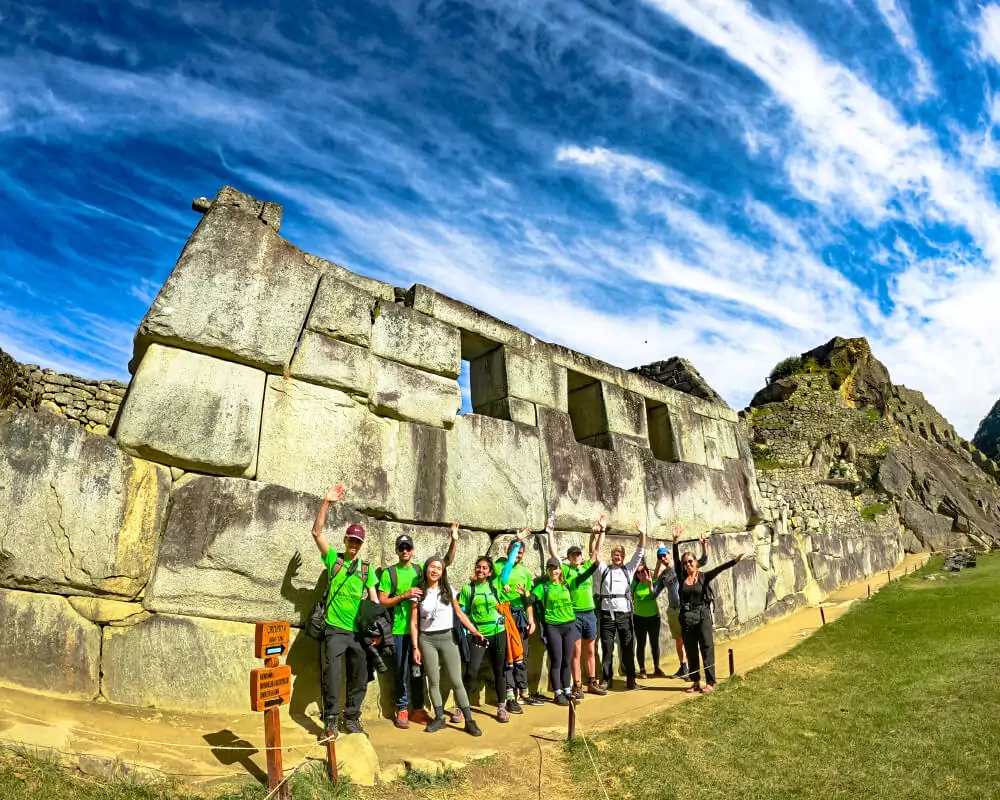
The meticulous construction, the spiritual significance, and the subsequent rediscovery by Hiram Bingham have elevated the Inca Trail to a symbol of resilience and historical marvel.
Encouragement for Readers to Experience the Trail with us
Alpaca Expeditions extends an invitation to all adventure seekers and history enthusiasts to embark on this transformative journey. With a commitment to preservation and an emphasis on education, we ensure that every step taken along the Inca Trail is not just a physical trek but a pilgrimage into the heart of Incan civilization.
By choosing us, travellers become part of a legacy of responsible tourism. We focus on contributing to the preservation of this ancient wonder for generations to come.
The Inca Trail, with its breathtaking landscapes and profound historical resonance, beckons explorers to experience not just the beauty of Machu Picchu but the spirit of a civilization that echoes through the stones and stories along the trail.
Your adventure awaits, guided by our expertise, where every footprint tells a tale of the past. And every vista is a window into the enduring legacy of the Inca Empire.
Alpaca Expeditions Recognitions
ISO (International Organization for Standardization)
In the pursuit to stand out from the rest, Alpaca Expeditions has obtained four ISOs plus our carbon footprint certificate to date. These achievements result from our efforts to implement the internationally-recognized integrated management system. They also represent our commitment to all of our clients and staff of operating sustainability and responsibility in every way possible.


































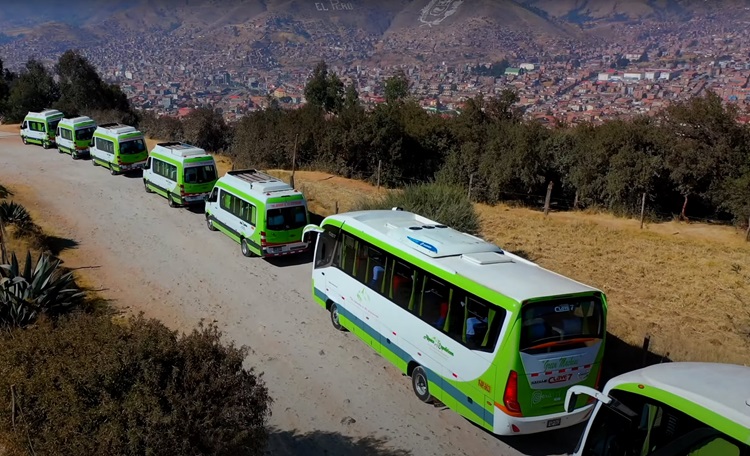
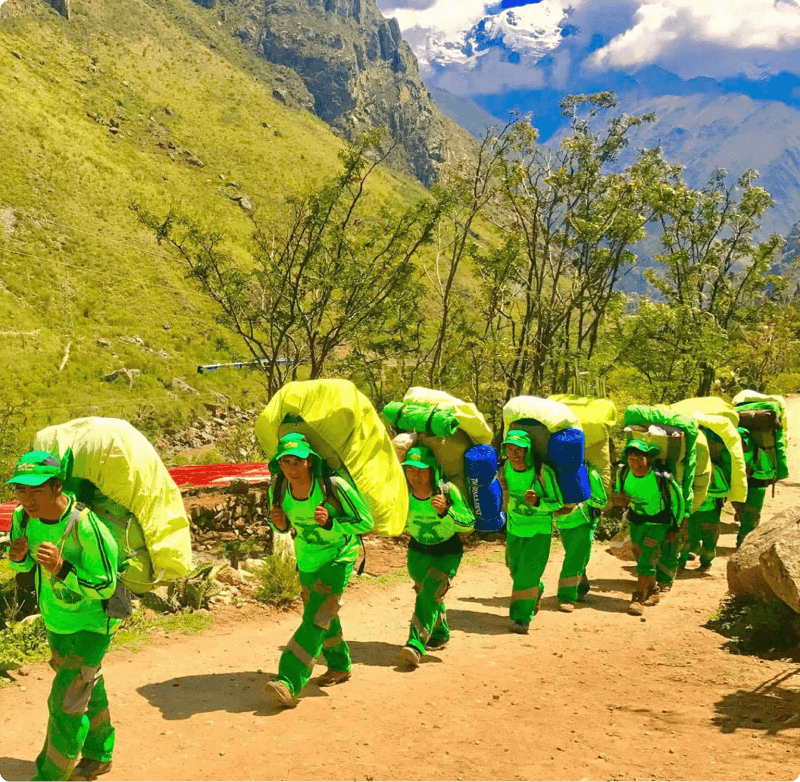 Porters will carry up to 7 kg of your personal items, which must include your sleeping bag and air mat (if you bring or rent one). From us, these two items weigh a combined total of 3.5 kg.
Porters will carry up to 7 kg of your personal items, which must include your sleeping bag and air mat (if you bring or rent one). From us, these two items weigh a combined total of 3.5 kg.